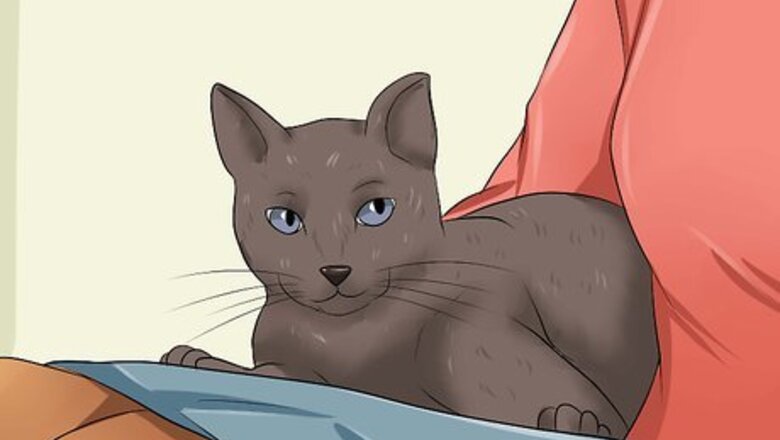
views
Understanding Your Cat
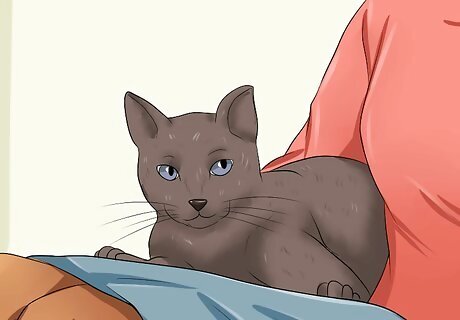
Strike a healthy balance between playing with your cat and giving it alone time. Even though cats really need your care, they have a strong need for independence and personal space. While cats enjoy being stroked, they are not always interested in interaction with people. One of the biggest mistakes pet owners make is to treat cats like dogs. Remember that they are very different animals! Dogs are pack animals originally bred to work alongside people. In contrast, cats are relatively solitary animals that historically served humans by killing vermin on their own. Don’t smother cats or be offended if they hide from you sometimes. This is part of their nature.
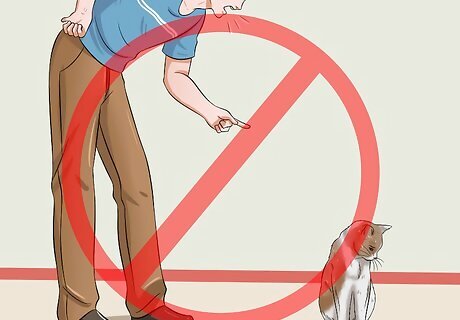
Avoid resorting to punishment. When cats are punished by yelling or other aggressive actions, they simply tend run away. For the most part, cats do not learn through discipline. Your cat will not love you if you're a mean owner. Never strike a cat as this will only make matters worse. While spraying a cat with water to punish bad behaviours is a common tactic, water-spraying may make your cat fear and distrust of you
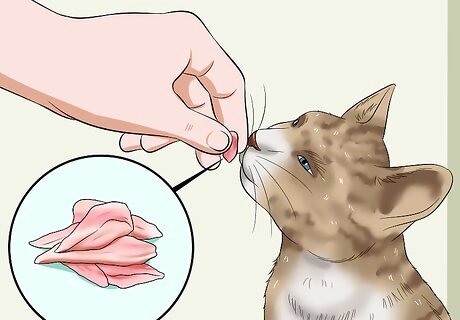
Discover your cat’s favourite treats. Like humans, there are some foods that cats prefer over all others. Find out what these foods are, and instead of discipline use treats to reinforce your cat’s positive behaviour. Tastes among cats vary, but small tuna flakes and cooked chicken pieces often prove irresistible. Ration these treats to make your cat love you. Avoid feeding cats milk; contrary to popular belief, dairy is unhealthy for them. Also avoid feeding cats chocolate, candy, raw eggs, raw meat or fish. Remember that treats are not a substitute for full meals of cat food.
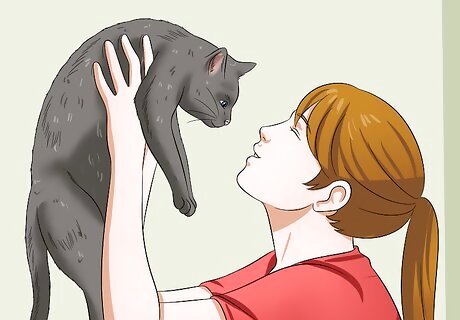
Embrace your cat’s unique personality! Although there are certain behaviours common to all cats, considerable variation exists. Spend time getting to know what your cat likes and dislikes. Knowing and respecting your cat's unique personality is important to getting it to love you.
Communicating with Your Cat
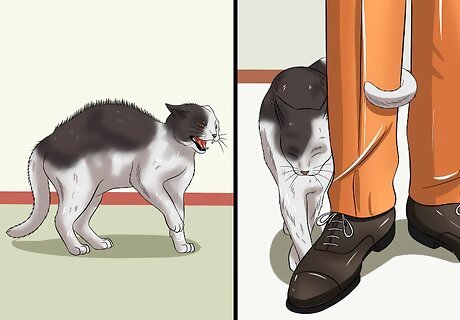
Learn and respect your cat’s body language. Much like humans, cats use body language as a form of communication to express everything from trust to fear. Their postures convey important messages. For example: An arched back, upright hair along the spine, and unsheathed claws means that your cat feels threatened. Leave it alone for time being! If your cat nudges you, it may want to play. If your cat curls its tail around you, it’s probably expressing contentment. When a cat approaches you with it tail pointing up and then curling round slightly at the top it is wanting to see you and be petted and play with you, let a cat check you out first by putting your hand out and letting them sniff it before you stole them. If its tail is tucked below or between its legs, your cat is likely feeling anxious or insecure.
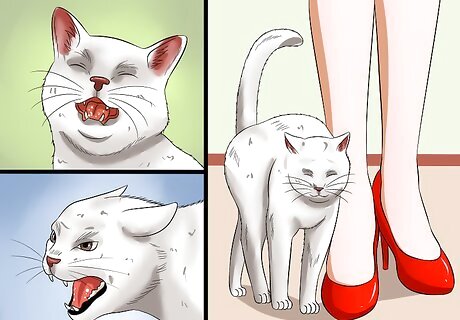
Listen to your cat’s vocalizations. Purring is a sign of love and contentment. Growling and hissing means stay away. Meowing is an attention-getting vocalization that expresses everything from hunger to a desire for affection. Cats do not meow at each other; they meow to communicate with people. Constant meowing may indicate illness and require a trip to the veterinarian.
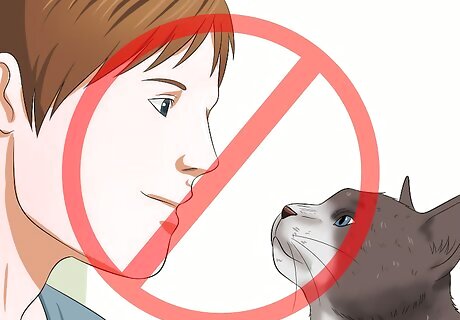
Avoid prolonged eye-contact with your cat. While polite in conversations between people, many cats find extended eye contact threatening. When cats blink in your presence it is a sign of trust. The next time your cat starts blinking at you, try mimicking the behaviour. By blinking slowly, you are communicating trust and openness, and fostering a loving relationship.
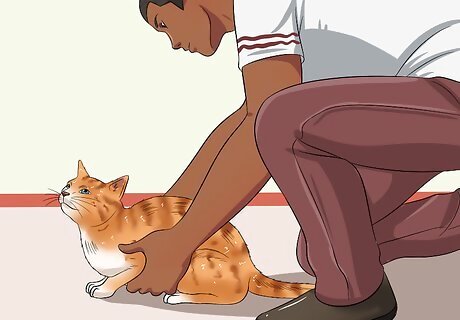
When picking up your cat, go down to its level first. Slowly bend down before lifting your cat into the air. If a cat can see you before you pick it up, it is less likely to be frightened.
Caring for Your Cat

Keep your cat out of danger. If your cat is safe and protected, it will love you more. Ensure your cat has a safe place to sleep, feels secure while toileting, has unobstructed access to food, and is not threatened by other human or animal members of the household. Ensure that your cat cannot access poisonous substances. Keep your pantry and cupboard doors closed, as cats are curious animals and they may get into trouble. Outfit your cat with a collar with a quick release buckle (in case he gets stuck) that includes contact information in case it runs away.

Feed your cat according to a schedule. Cats are creatures of habit. Don't change their feeding times drastically or very often. When cats do something good try to reward them with a treat, but don't let this interfere with their main meal. To get your cat to love you more, avoid frequently changing the type or brand of food they eat. Cats can be perfectly healthy eating dry food, canned food, or a combination of both. Most experts recommend feeding your cat no more than two meals a day. In industrialized countries, one in five cats is obese, which can cause serious health problems.

Don't neglect your cat! When leaving home, make sure your cat has enough food and access to fresh water. If you're away from home for an extended period, ensure that someone keeps an eye on your cat's well-being, cleans its litter, and provides some stimulation. A neglected cat will not love you. While cats are fairly independent creatures, they also need human attention and regular grooming. If going on vacation, consider a cattery or pet sitter.
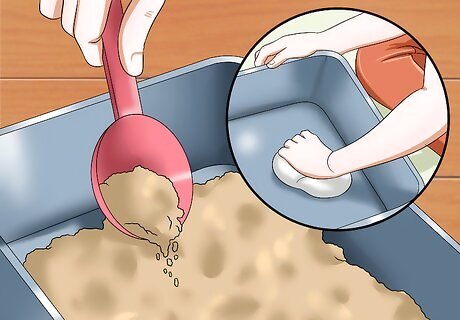
Clean litter boxes regularly. Cats love cleanliness; if their litter box is dirty they may find somewhere else to go. Add fresh litter daily. Wash out the box with soap and water routinely. Don't suddenly change a cat's type or brand of litter. When switching to a new brand of litter, gradually introduce it by mixing the new and the old.
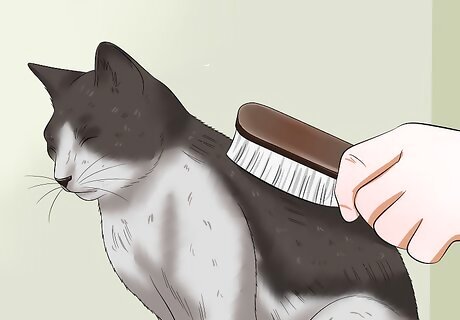
Brush your cat often. They love it! Regular brushing will keep their coats and skin healthy, prevent matting, and reduce shedding and hairballs. Grooming is a great chance to discover lumps, fleas, or injuries. Also use brushing as an opportunity to bond with your cat. Avoid brushing your cat against the grain of its fur; this may cause discomfort and stress. Remember to brush gently in long strokes rather than in short, rough strokes.
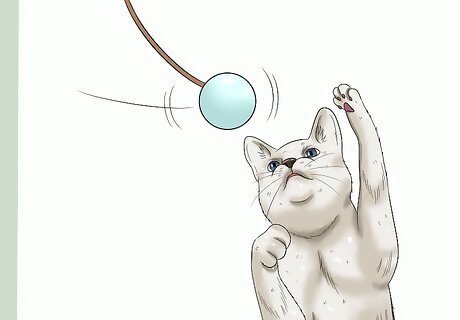
Play with your cat. It will love simple and inexpensive toys -- try using a toy attached to string to simulate prey animals. Make toys scurry like a rodent, or flutter like a bird. Your cat will playfully pounce on toys you move in front of them. Cats love owners that stimulate them through play. Encourage your cat to pounce on toys, not your hand!
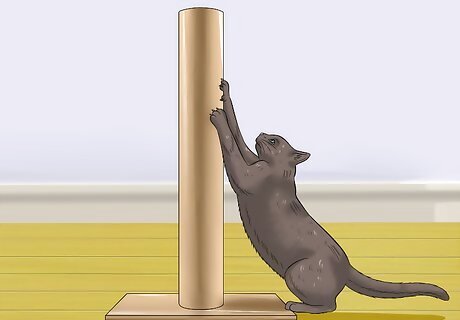
Invest in a scratching-post. Cats are naturally inclined to scratch surfaces in your home, such as furniture. But they can be trained to scratch specific objects, particularly posts fitted with rough surfaces such as dense carpet or sisal. Your cat will love you better if it has access to appropriate scratching areas in your home.

Consider purchasing or building a “cat tree” or “kitty condo,” which doubles as a scratching-post and a play structure. They will love climbing and playing on this kind of structure.
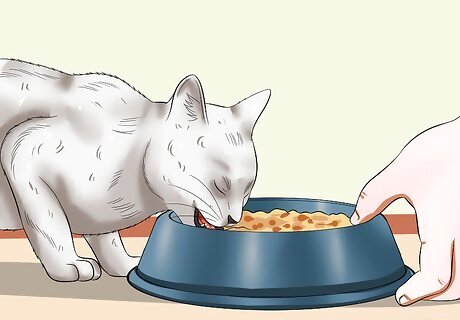
Utilize your cat's 'cupboard love' tendencies. Many cats prefer the person who feeds them to others in the home. If there is more than one person in your house, try to be the person who feeds the cat. The cat will get used to this and come to you straight away if hungry or it's time for dinner. One of the best ways to get a cat to love you is through its stomach!




















Comments
0 comment